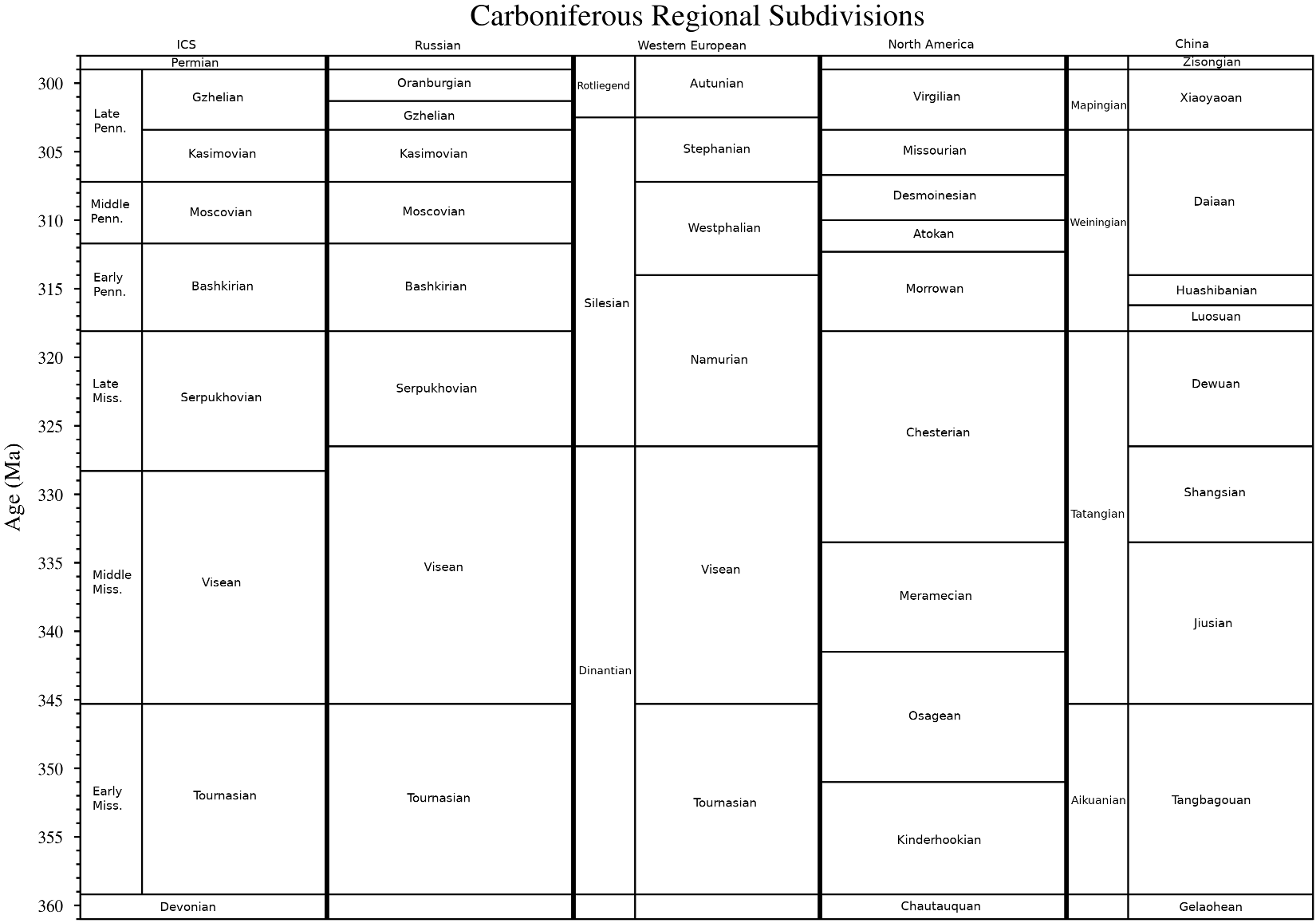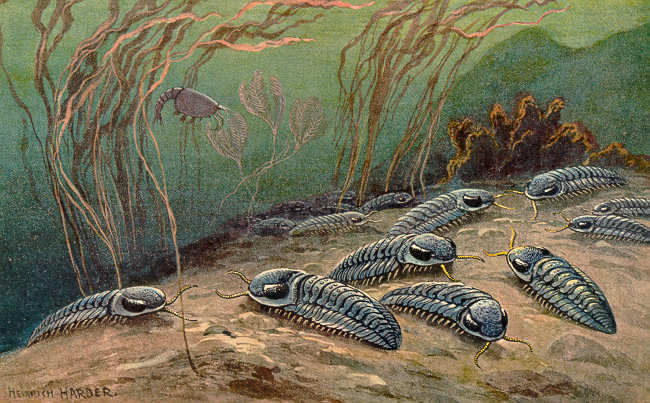|
Rhipidomella
''Rhipidomella'' is an extinct genus of brachiopod belonging to the order Orthida and family Rhipidomellidae. Specimens have been found in Carboniferous to Permian The Permian ( ) is a geologic period and System (stratigraphy), stratigraphic system which spans 47 million years, from the end of the Carboniferous Period million years ago (Mya), to the beginning of the Triassic Period 251.902 Mya. It is the s ... beds in southwest Asia, the Moscow Basin, and North America. Species *''R. cora'' d'Orbigny 1842 *''R. dubia'' Hall 1856 *''R. lyelliana'' De Koninck 1851 References Paleozoic life Spiriferida {{Brachiopod-stub ... [...More Info...] [...Related Items...] OR: [Wikipedia] [Google] [Baidu] |
Devonian
The Devonian ( ) is a period (geology), geologic period and system (stratigraphy), system of the Paleozoic era (geology), era during the Phanerozoic eon (geology), eon, spanning 60.3 million years from the end of the preceding Silurian period at million years ago (Megaannum, Ma), to the beginning of the succeeding Carboniferous period at Ma. It is the fourth period of both the Paleozoic and the Phanerozoic. It is named after Devon, South West England, where rocks from this period were first studied. The first significant evolutionary radiation of history of life#Colonization of land, life on land occurred during the Devonian, as free-spore, sporing land plants (pteridophytes) began to spread across dry land, forming extensive coal forests which covered the continents. By the middle of the Devonian, several groups of vascular plants had evolved leaf, leaves and true roots, and by the end of the period the first seed-bearing plants (Pteridospermatophyta, pteridospermatophyt ... [...More Info...] [...Related Items...] OR: [Wikipedia] [Google] [Baidu] |
Permian
The Permian ( ) is a geologic period and System (stratigraphy), stratigraphic system which spans 47 million years, from the end of the Carboniferous Period million years ago (Mya), to the beginning of the Triassic Period 251.902 Mya. It is the sixth and last period of the Paleozoic Era; the following Triassic Period belongs to the Mesozoic Era. The concept of the Permian was introduced in 1841 by geologist Sir Roderick Murchison, who named it after the Perm Governorate, region of Perm in Russia. The Permian witnessed the diversification of the two groups of amniotes, the synapsids and the Sauropsida, sauropsids (reptiles). The world at the time was dominated by the supercontinent Pangaea, which had formed due to the collision of Euramerica and Gondwana during the Carboniferous. Pangaea was surrounded by the superocean Panthalassa. The Carboniferous rainforest collapse left behind vast regions of desert within the continental interior. Amniotes, which could better cope with these ... [...More Info...] [...Related Items...] OR: [Wikipedia] [Google] [Baidu] |
Extinct
Extinction is the termination of an organism by the death of its Endling, last member. A taxon may become Functional extinction, functionally extinct before the death of its last member if it loses the capacity to Reproduction, reproduce and recover. As a species' potential Range (biology), range may be very large, determining this moment is difficult, and is usually done retrospectively. This difficulty leads to phenomena such as Lazarus taxon, Lazarus taxa, where a species presumed extinct abruptly "reappears" (typically in the Fossil, fossil record) after a period of apparent absence. Over five billion species are estimated to have died out. It is estimated that there are currently around 8.7 million species of eukaryotes globally, possibly many times more if microorganisms are included. Notable extinct animal species include Dinosaur, non-avian dinosaurs, Machairodontinae, saber-toothed cats, and mammoths. Through evolution, species arise through the process of specia ... [...More Info...] [...Related Items...] OR: [Wikipedia] [Google] [Baidu] |
Genus
Genus (; : genera ) is a taxonomic rank above species and below family (taxonomy), family as used in the biological classification of extant taxon, living and fossil organisms as well as Virus classification#ICTV classification, viruses. In binomial nomenclature, the genus name forms the first part of the binomial species name for each species within the genus. :E.g. ''Panthera leo'' (lion) and ''Panthera onca'' (jaguar) are two species within the genus ''Panthera''. ''Panthera'' is a genus within the family Felidae. The composition of a genus is determined by taxonomy (biology), taxonomists. The standards for genus classification are not strictly codified, so different authorities often produce different classifications for genera. There are some general practices used, however, including the idea that a newly defined genus should fulfill these three criteria to be descriptively useful: # monophyly – all descendants of an ancestral taxon are grouped together (i.e. Phylogeneti ... [...More Info...] [...Related Items...] OR: [Wikipedia] [Google] [Baidu] |
Brachiopod
Brachiopods (), phylum (biology), phylum Brachiopoda, are a phylum of animals that have hard "valves" (shells) on the upper and lower surfaces, unlike the left and right arrangement in bivalve molluscs. Brachiopod valves are hinged at the rear end, while the front can be opened for feeding or closed for protection. Two major categories are traditionally recognized, articulate and inarticulate brachiopods. The word "articulate" is used to describe the tooth-and-groove structures of the valve-hinge which is present in the articulate group, and absent from the inarticulate group. This is the leading diagnostic skeletal feature, by which the two main groups can be readily distinguished as fossils. Articulate brachiopods have toothed hinges and simple, vertically oriented opening and closing muscles. Conversely, inarticulate brachiopods have weak, untoothed hinges and a more complex system of vertical and oblique (diagonal) muscles used to keep the two valves aligned. In many brachio ... [...More Info...] [...Related Items...] OR: [Wikipedia] [Google] [Baidu] |
Orthida
Orthida is an extinct order of brachiopods which appeared during the Early Cambrian period and became very diverse by the Ordovician, living in shallow-shelf seas. Orthids are the oldest member of the subphylum Rhynchonelliformea (Articulate Brachiopods), and is the order from which all other brachiopods of this group stem. Physically they are usually strophic, with well-developed interareas. They also commonly have radiating ribs, sulcus, and fold structures. Typically one valve, often the brachial valve, is flatter than the other. The interior structure of the brachial valves are usually simple. In shape they are sub-circular to elliptical, with typically biconvex valves. There is some debate over the forms that first appeared of this order as to how they should be classified. However, they began to differentiate themselves by the late Early Cambrian period, and by the late Cambrian period had diversified into numerous varieties and reach 2 to 5 cm in width. Spec ... [...More Info...] [...Related Items...] OR: [Wikipedia] [Google] [Baidu] |
Carboniferous
The Carboniferous ( ) is a Geologic time scale, geologic period and System (stratigraphy), system of the Paleozoic era (geology), era that spans 60 million years, from the end of the Devonian Period Ma (million years ago) to the beginning of the Permian Period, Ma. It is the fifth and penultimate period of the Paleozoic era and the fifth period of the Phanerozoic eon (geology), eon. In North America, the Carboniferous is often treated as two separate geological periods, the earlier Mississippian (geology), Mississippian and the later Pennsylvanian (geology), Pennsylvanian. The name ''Carboniferous'' means "coal-bearing", from the Latin ("coal") and ("bear, carry"), and refers to the many coal beds formed globally during that time. The first of the modern "system" names, it was coined by geologists William Conybeare (geologist), William Conybeare and William Phillips (geologist), William Phillips in 1822, based on a study of the British rock succession. Carboniferous is the per ... [...More Info...] [...Related Items...] OR: [Wikipedia] [Google] [Baidu] |
Paleozoic Life
The Paleozoic ( , , ; or Palaeozoic) Era is the first of three geological eras of the Phanerozoic Eon. Beginning 538.8 million years ago (Ma), it succeeds the Neoproterozoic (the last era of the Proterozoic Eon) and ends 251.9 Ma at the start of the Mesozoic Era. The Paleozoic is subdivided into six geologic periods (from oldest to youngest), Cambrian, Ordovician, Silurian, Devonian, Carboniferous and Permian. Some geological timescales divide the Paleozoic informally into early and late sub-eras: the Early Paleozoic consisting of the Cambrian, Ordovician and Silurian; the Late Paleozoic consisting of the Devonian, Carboniferous and Permian. The name ''Paleozoic'' was first used by Adam Sedgwick (1785–1873) in 1838 to describe the Cambrian and Ordovician periods. It was redefined by John Phillips (1800–1874) in 1840 to cover the Cambrian to Permian periods. It is derived from the Greek ''palaiós'' (παλαιός, "old") and ''zōḗ'' (ζωή, "life") meaning "ancient lif ... [...More Info...] [...Related Items...] OR: [Wikipedia] [Google] [Baidu] |






